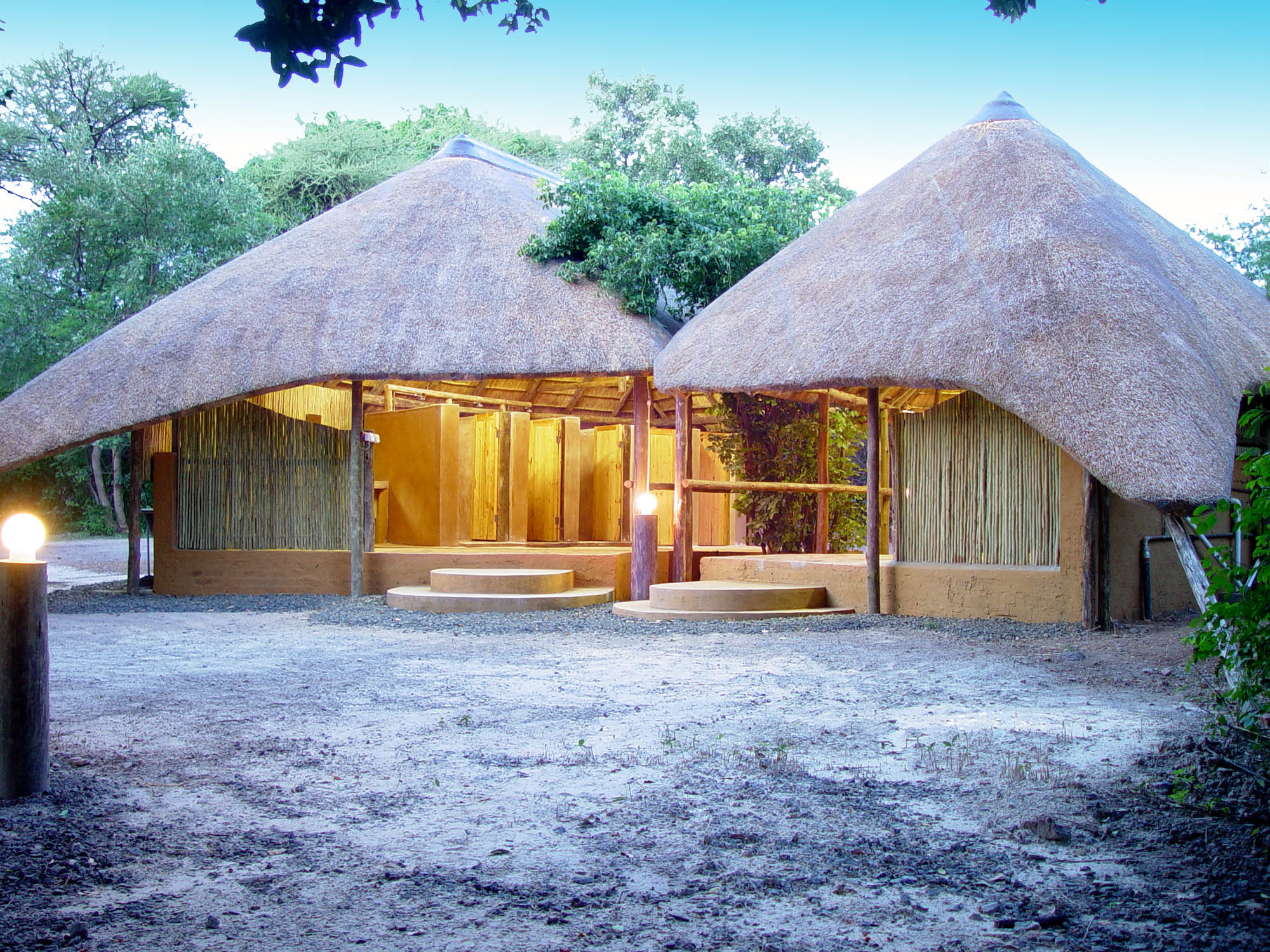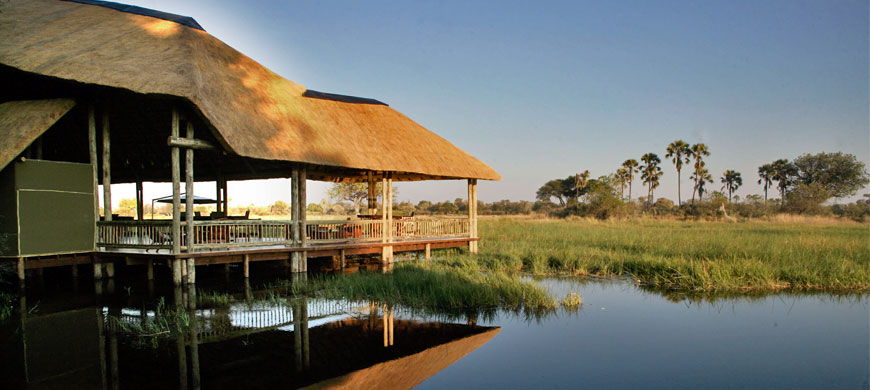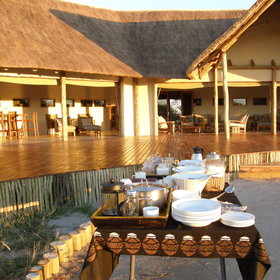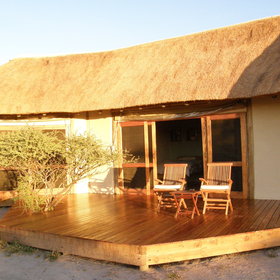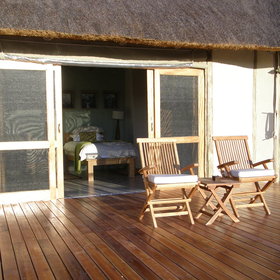MAKGADIKGADI PANS
The
Makgadikgadi Pan is a large salt pan in the middle of the dry
savanna of northeastern Botswana. It is one of the largest salt
flats in the world. The pan is all that remains of the formerly
enormous Lake Makgadikgadi, which once covered an area larger
than Switzerland, but dried up several thousand years ago. Lying
southeast of the Okavango Delta and surrounded by the Kalahari
Desert, Makgadikgadi is technically not a single pan but many pans
with sandy desert in between, the largest being the Sua
(Sowa), Nwetwe and Nxai Pans. The largest individual pan is about
1,900 sq mi (4,921.0 km2). In comparison, Salar de Uyuni
in Bolivia is a single salt flat of 4,100 sq mi (10,619.0
km2), rarely has much water, and is generally claimed to be the
world's largest salt pan. A dry salty clay crust most of the
year, the pans are seasonally covered with water and grass, and are
then a refuge for birds and animals in this very arid part of the
world. The climate is hot and dry but with regular annual
rains. These salt pans cover 6,200 sq mi (16,057.9 km2) in the
Kalahari basin and form the bed of the ancient Lake Makgadikgadi,
which evaporated many millennia ago. Archaeological recovery in the
Makgadikgadi has revealed the presence of prehistoric man through
abundant finds of
stone tools; some of
these tools have been dated sufficiently early to establish their
origin as earlier than the era of Homo sapiens. Pastoralists
herded grazing livestock here when water was more plentiful earlier
in the Holocene.
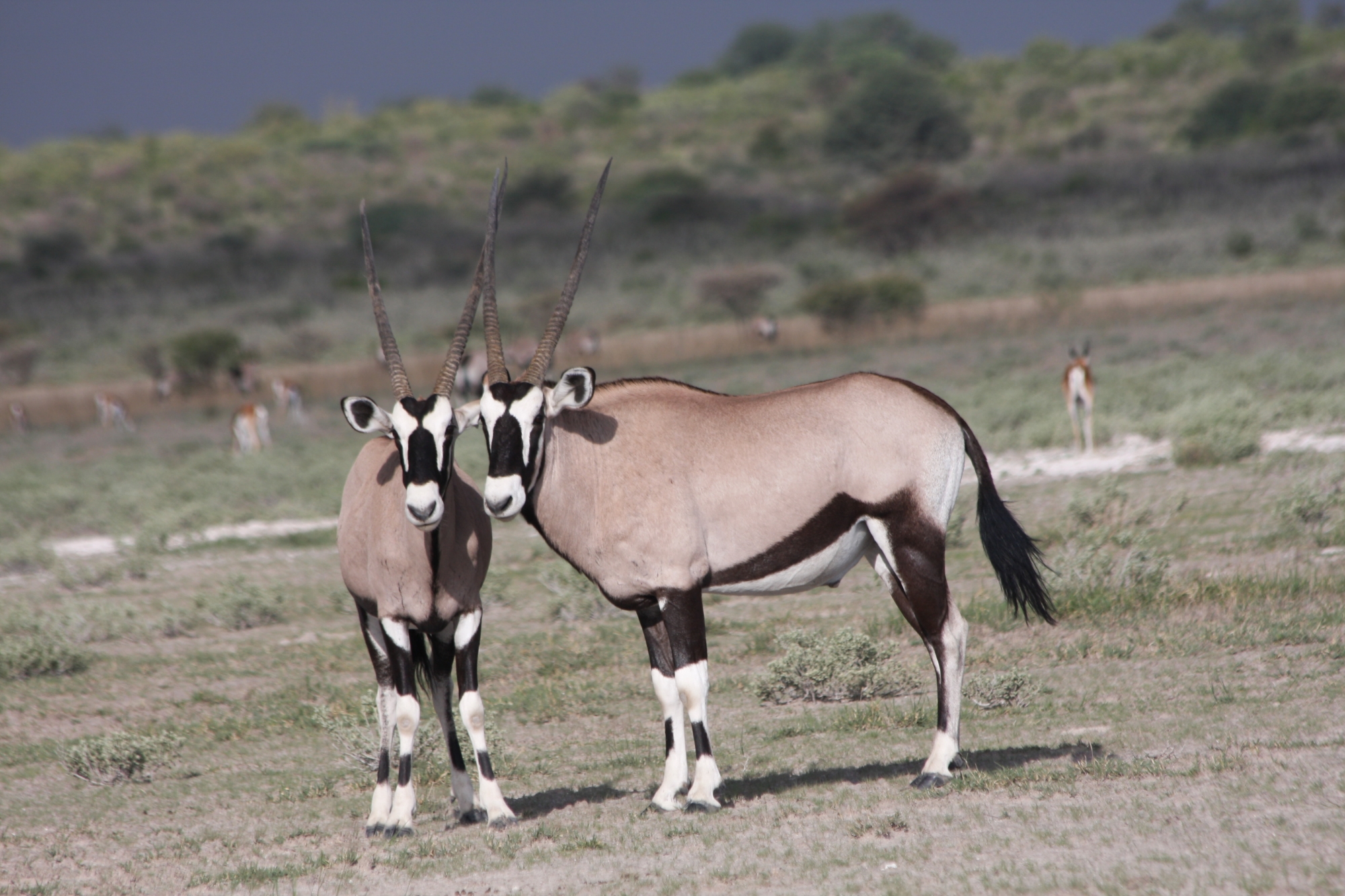
LEROO LA TAU

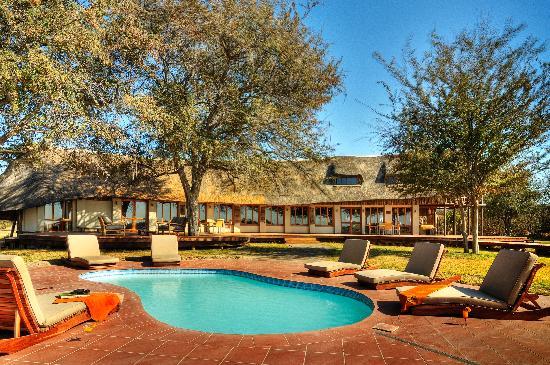
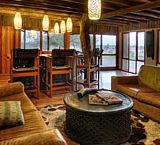

Leroo La
Tau Lodge is situated near the village of Khumaga on the western
border of the Makgadikgadi Pans National
Park.
It is set on
the eastern end of a bend on the banks of the Boteti River, a
natural watercourse that derives its flow
from the core
Okavango Delta through the Thamalakane River in Maun. The lodge is
outside of the park, and surrounded
by it on 3 sides.In the rainy season
the crystal-clear waters of the Boteti discharge to the
Makgadikgadi Pans,
initiating seasonal wildlife activity. In
the dry season, it's an exciting time for animal interaction.
Wildlife congregate
around the river as other seasonal ponds
and natural drainage systems become parched. Zebra and wildebeest –
often
numbering thousands – push and bump their
way to the scarce pools of water, together with elephant, giraffe,
predators and
believe it or not, the odd white
rhino! Enquire....
SAN CAMP
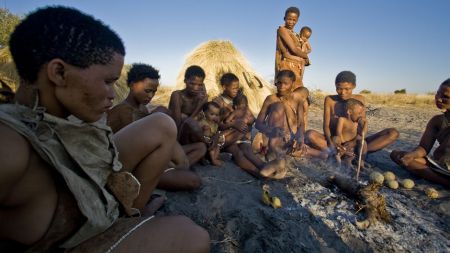
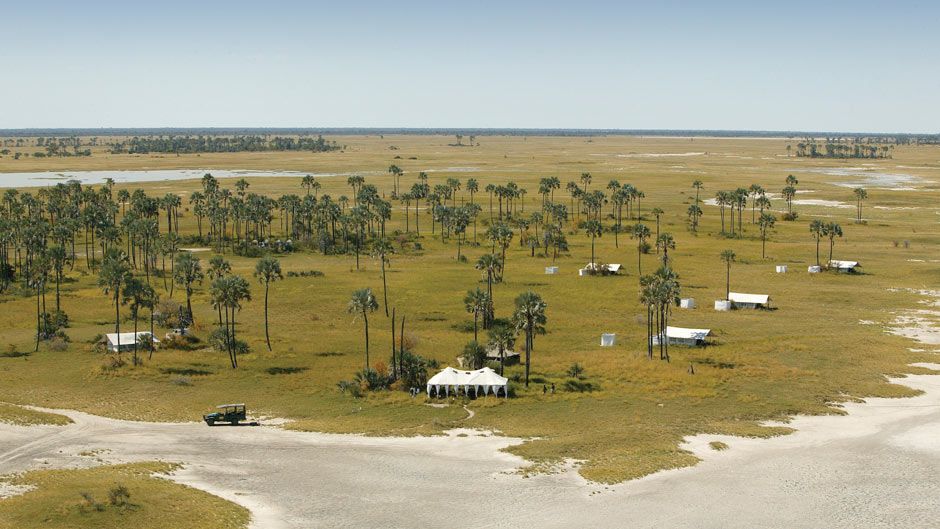
San Camp
is situated on the edge of the vast and mysterious Makgadikgadi
Salt Pans, the remnant of an extinct super
lake
that once
covered most of Botswana. Turn 360° and nothing crosses the eye but
the bowl of the sky. This is God's
own minimalism.Classic white
tents stand majestically on the shore of an enormous sparkling salt
pan, each sheltered by a
cluster
of stately desert palms. Pared down safari elegance with minimal
ecological impact is combined with
spectacular vistas.
JACK"S CAMP


